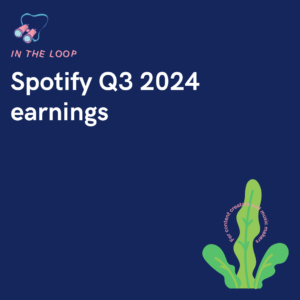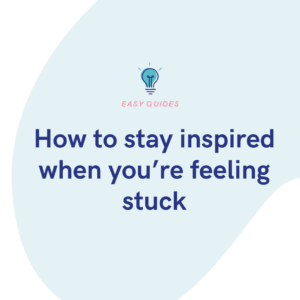Creating for yourself is such a different experience because you have your own likes and taste, and you can be a little kinder to yourself if your work isn’t perfect. However, with an audience, you want it to be just right which can add pressure.
In the world of creativity, there’s a constant push and pull between staying true to your personal vision and meeting the expectations of an audience. Whether you’re an artist, writer, musician, or any other type of creator, this balancing act can be challenging.
On one hand, you want to create work that fulfils you and aligns with your values. On the other, the reality of needing to connect with an audience, especially if you want to monetise your work, can steer your creative direction.
The joy of creating for yourself
When you create purely for yourself, there’s undeniable freedom. This is where passion projects are born—work that’s unfiltered and unbound by expectations. Whether it’s a painting that no one else may ever see, a song that feels too experimental for your usual sound, or a personal blog post that strays from your typical content.
Benefits of creating for yourself:
- Authenticity: You have no one to answer to except yourself. This is where your raw, unrefined creativity thrives.
- Emotional fulfilment: Creating without boundaries often brings a sense of joy, peace, and fulfilment, since the work feels personal and true to who you are.
- No pressure: There’s no pressure to meet external expectations or standards, which can help you take more risks and explore new ideas.
However, the risk of creating solely for yourself is that it may not always resonate with a larger audience. Your work might feel too niche, personal, or unconventional to those who don’t share your same perspective or passion.
The need to create for an audience
On the flip side, creating for an audience often comes with its own set of rules. If you’re a creator who depends on the support of your audience for income, exposure, or feedback, you may need to adapt your work to meet their tastes or interests. This could mean following trends, using popular themes, or even changing your creative style to align with the audience.
Benefits of creating for an audience:
- Connection: When your work resonates with others, it can foster a deep connection. You’re able to inspire, entertain, or provoke thought in a way that feels meaningful.
- Growth: Meeting audience expectations often means pushing yourself outside your comfort zone and learning new skills, techniques, or perspectives.
- Sustainability: If you’re aiming to monetise your creative work, an audience is crucial. Tailoring your work to their interests can result in greater support, whether through purchases, shares, or engagement.
Yet, the danger of always creating for an audience is that it can sometimes stifle creativity. If you’re constantly focused on what others want, you may lose sight of your original artistic vision or feel boxed in by expectations.
Finding the balance – staying authentic while growing your audience
So how do you find that middle ground between self-expression and audience appeal? Here are some strategies to help you strike the right balance:
- Know your core values: Understand what matters to you as a creator. Define your creative values and principles early on. When faced with audience pressure, return to these values as a guide to ensure you don’t stray too far from what’s authentic to you.
- Identify your audience’s core interests: While it’s essential to stay true to your creative voice, understanding what your audience loves about your work can help you bridge the gap. Look for common themes, topics, or styles that resonate with both you and your audience.
- Experiment in small doses: You don’t always have to commit to a single direction. Use your creative platform to test out new ideas or styles on a smaller scale. Try releasing passion projects alongside audience-oriented content. This allows you to satisfy both your creative needs and the expectations of your audience without fully compromising either.
- Be transparent: Sometimes, the best way to manage audience expectations is by simply being transparent about your creative journey. Share your process, your struggles, and your passions with your audience. When people understand the “why” behind your work, they’re more likely to support you, even if your creative direction shifts.
- Evolve gradually: Creative evolution is natural. However, sudden or drastic changes can alienate your audience. Instead, aim for gradual evolution—introduce new elements or ideas incrementally, giving your audience time to adjust and appreciate your growth.
- Set boundaries: It’s okay to say no to ideas, commissions, or trends that don’t align with your values. Setting boundaries will help you maintain creative integrity, and it’s important to remember that not every piece of work has to appeal to everyone.
In the end, the most fulfilling creative journey often lies in finding a balance between creating for yourself and creating for an audience. You don’t have to choose one over the other. By staying rooted in your creative values and being mindful of your audience’s needs, you can craft a path that feels authentic and rewarding.
Remember, your audience came to you because of your unique voice—so keep nurturing that while remaining open to growth and evolution. The creative tension between self-expression and audience appeal can be a catalyst for your best work yet.







